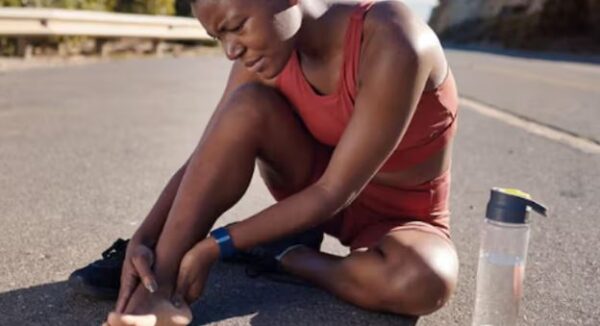Lifestyle
7 common foot problems and how to manage them

If you’ve ever experienced a throbbing pain in your heel or a strange burning between your toes, you’re not alone.
Many people deal with foot problems from time to time. But the good news is, most of these issues can be managed with a little knowledge and care.
Here are seven common foot problems and practical advice on how to manage them:
1. Athlete’s foot
Athlete’s foot, also known as tinea pedis, is a fungal infection that thrives in warm, damp environments. It spreads through direct contact with infected skin or surfaces in places like swimming pools.
Symptoms: Red, itchy, scaly skin, especially between the toes.
Prevention: Keep your feet dry, wear breathable shoes, and avoid walking barefoot in communal areas.
Treatment: Over-the-counter antifungal creams or powders, keeping feet clean and dry, and in severe cases, oral medications.
2. Blisters
Blisters form due to friction, often from wearing ill-fitting shoes or prolonged walking.
Symptoms: Fluid-filled sacs on the skin that can be painful.
Prevention: Wear properly fitting shoes and moisture-wicking socks. Break in new shoes gradually.
Treatment: Clean the blister with antiseptic, cover it with a bandage, and avoid popping it to prevent infection.
3. Bunions
Bunions develop from wearing tight, narrow shoes that push the big toe towards the other toes, causing a bony bump.
Prevention: Wear shoes with a wide toe box and avoid high heels.
Treatment: Use padding, orthotic devices, and, in severe cases, surgery to correct the deformity.
4. Plantar fasciitis
This condition results from inflammation of the plantar fascia, the ligament that connects your heel to your toes, often due to overuse or improper footwear.
Symptoms: Sharp heel pain, especially in the morning.
Prevention: Stretch your feet before physical activities and wear supportive shoes.
Treatment: Rest, ice, physical therapy, and orthotic inserts can help alleviate symptoms. Severe cases may require medical intervention.
5. Heel spurs
Heel spurs are calcium deposits that form on the underside of the heel bone, often due to repetitive strain and overstretching of the plantar fascia.
Symptoms: Chronic pain in the heel, particularly when walking or standing.
Prevention: Wear shoes with proper arch support and cushioned soles. Stretch your feet regularly.
Treatment: Use ice packs, anti-inflammatory medications, orthotic devices, and in severe cases, surgery.
6. Corns and calluses
These thickened areas of skin develop from repeated pressure or friction, often from ill-fitting shoes.
Symptoms: Rough, hardened skin, sometimes with pain or discomfort.
Prevention: Wear well-fitting shoes and use protective pads in areas prone to friction.
Treatment: Soak feet in warm water, use pumice stones to gently remove dead skin, and apply moisturising creams. Severe cases may require professional removal by a podiatrist.
7. Claw toe
An imbalance in the muscles of the foot is often due to genetics, poorly fitting shoes, or underlying medical conditions such as diabetes or rheumatoid arthritis.
Symptoms: Toes bent into a claw-like position, leading to pain, corns, and calluses.
Prevention: Wear shoes with a roomy toe box and low heels. Avoid high heels and shoes that are too tight.
Treatment: Toe exercises, splints, and shoes with proper support can help. In severe cases, surgery may be necessary to correct the deformity.
If you experience persistent foot pain or issues, consult a healthcare professional for a proper diagnosis and treatment plan. Taking care of your feet today can prevent more serious problems tomorrow.






